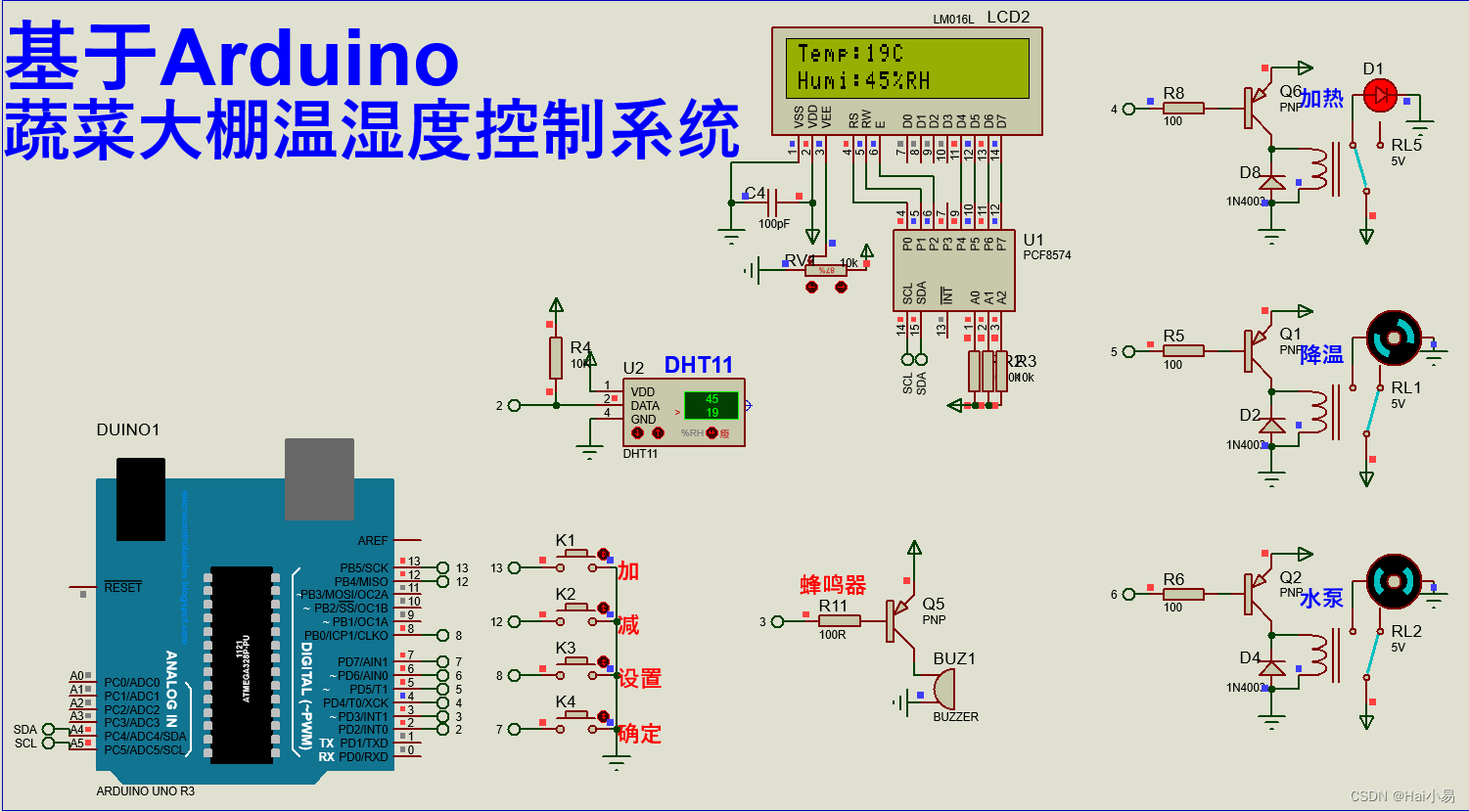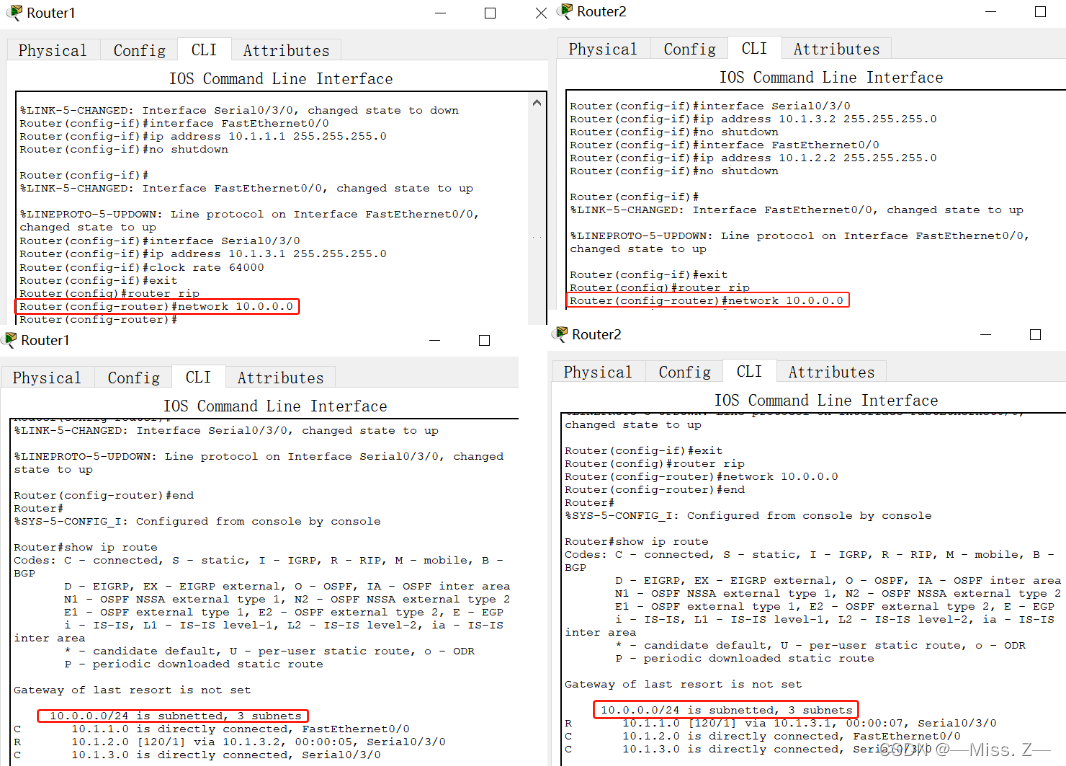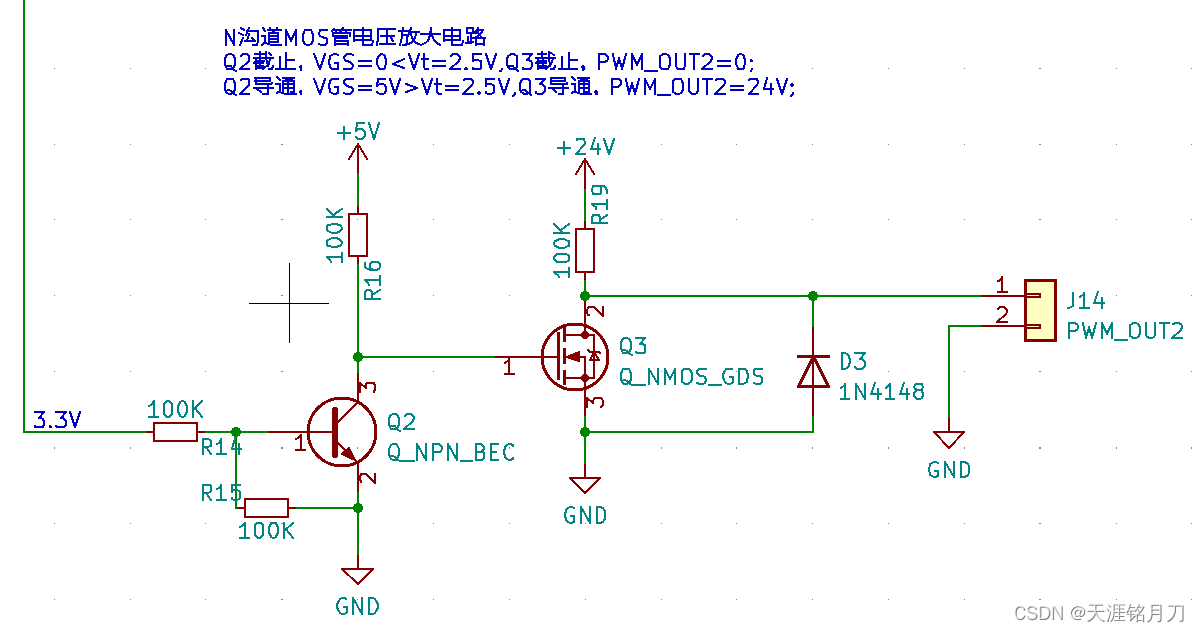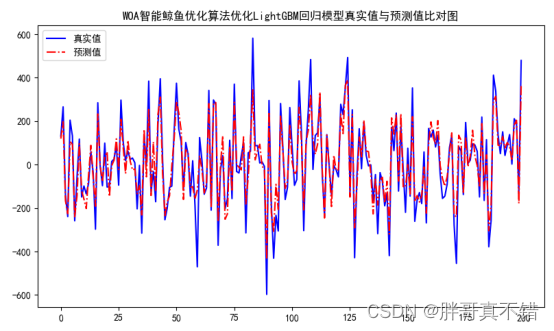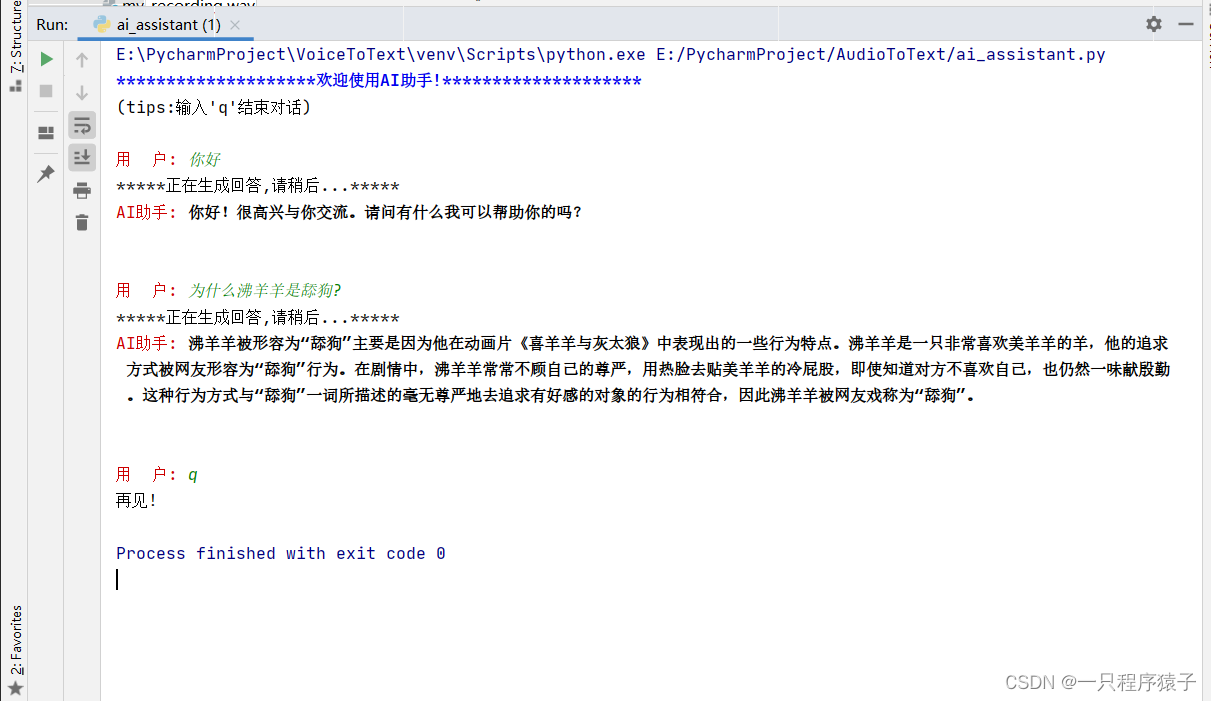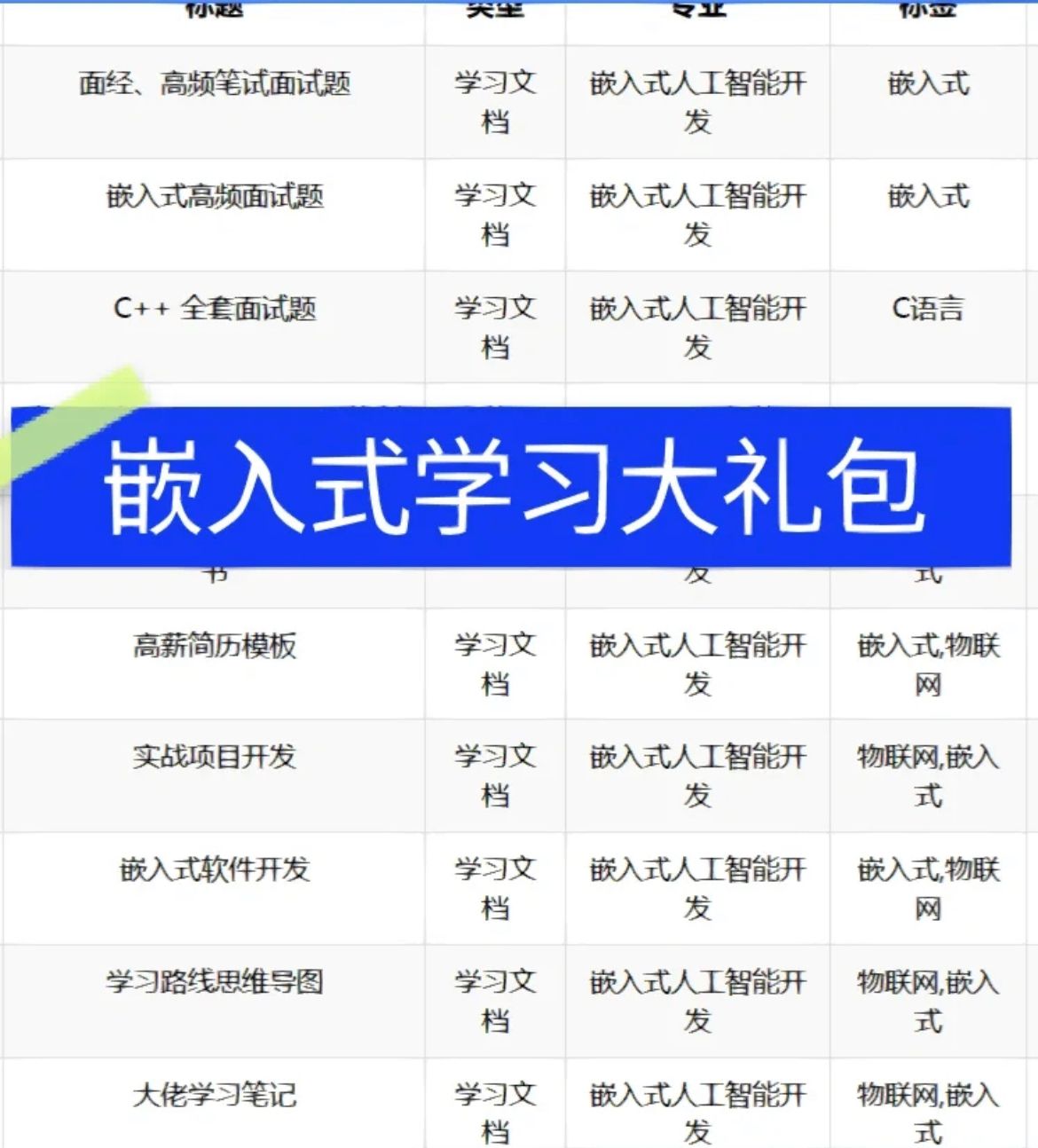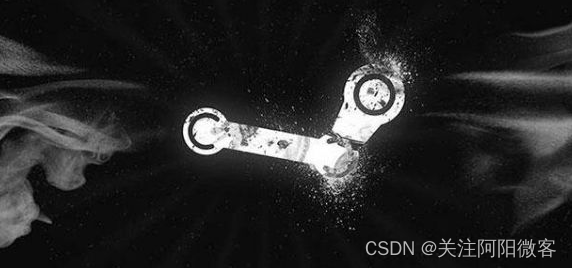网络结构
以YOLOv3_SPP为例
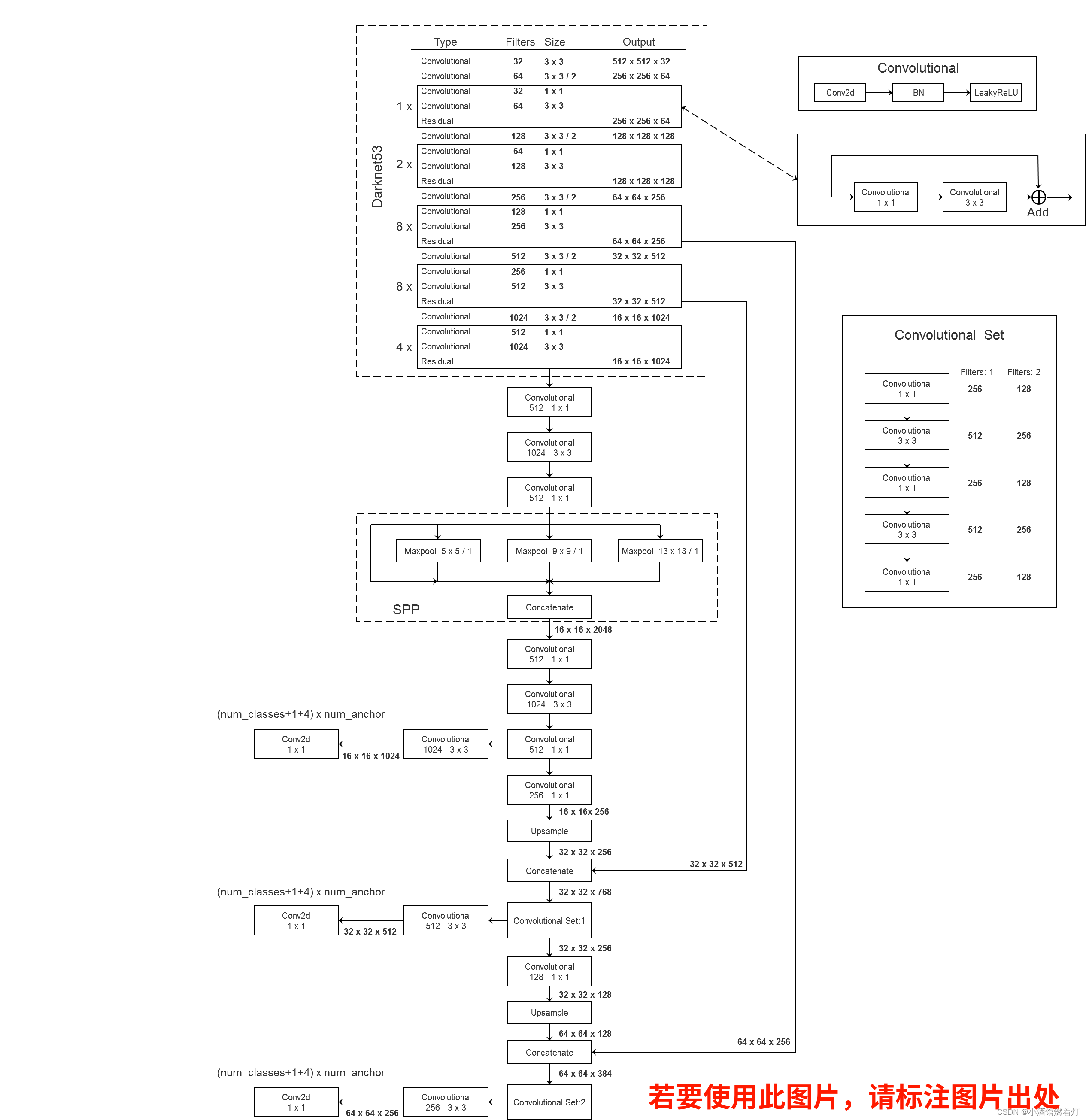
cfg文件
部分,只是用来展示,全部的代码在文章最后
[net]
# Testing
# batch=1
# subdivisions=1
# Training
batch=64
subdivisions=16
width=608
height=608
channels=3
momentum=0.9
decay=0.0005
angle=0
saturation = 1.5
exposure = 1.5
hue=.1
learning_rate=0.001
burn_in=1000
max_batches = 500200
policy=steps
steps=400000,450000
scales=.1,.1
[convolutional]
batch_normalize=1
filters=32
size=3
stride=1
pad=1
activation=leaky
# Downsample
[convolutional]
batch_normalize=1
filters=64
size=3
stride=2
pad=1
activation=leaky
[convolutional]
batch_normalize=1
filters=32
size=1
stride=1
pad=1
activation=leaky
分析结构
图形化分析
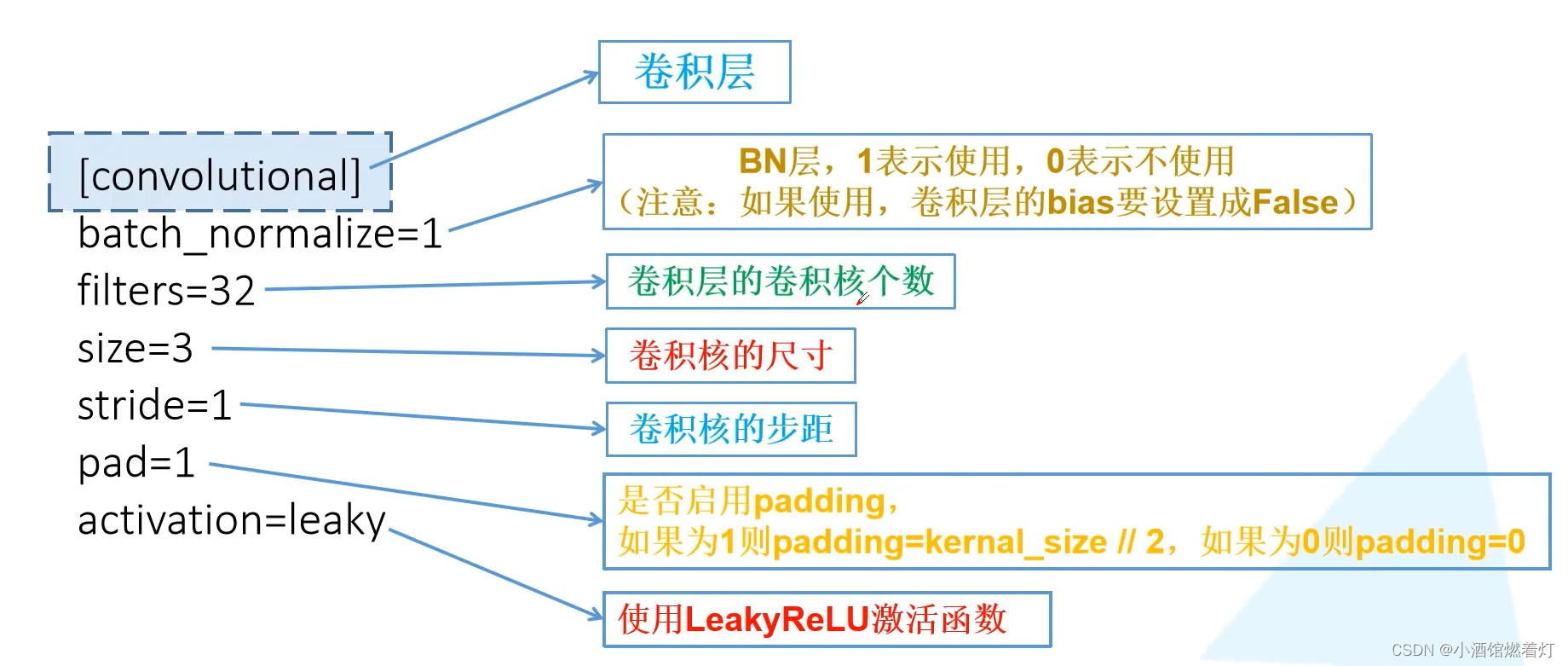



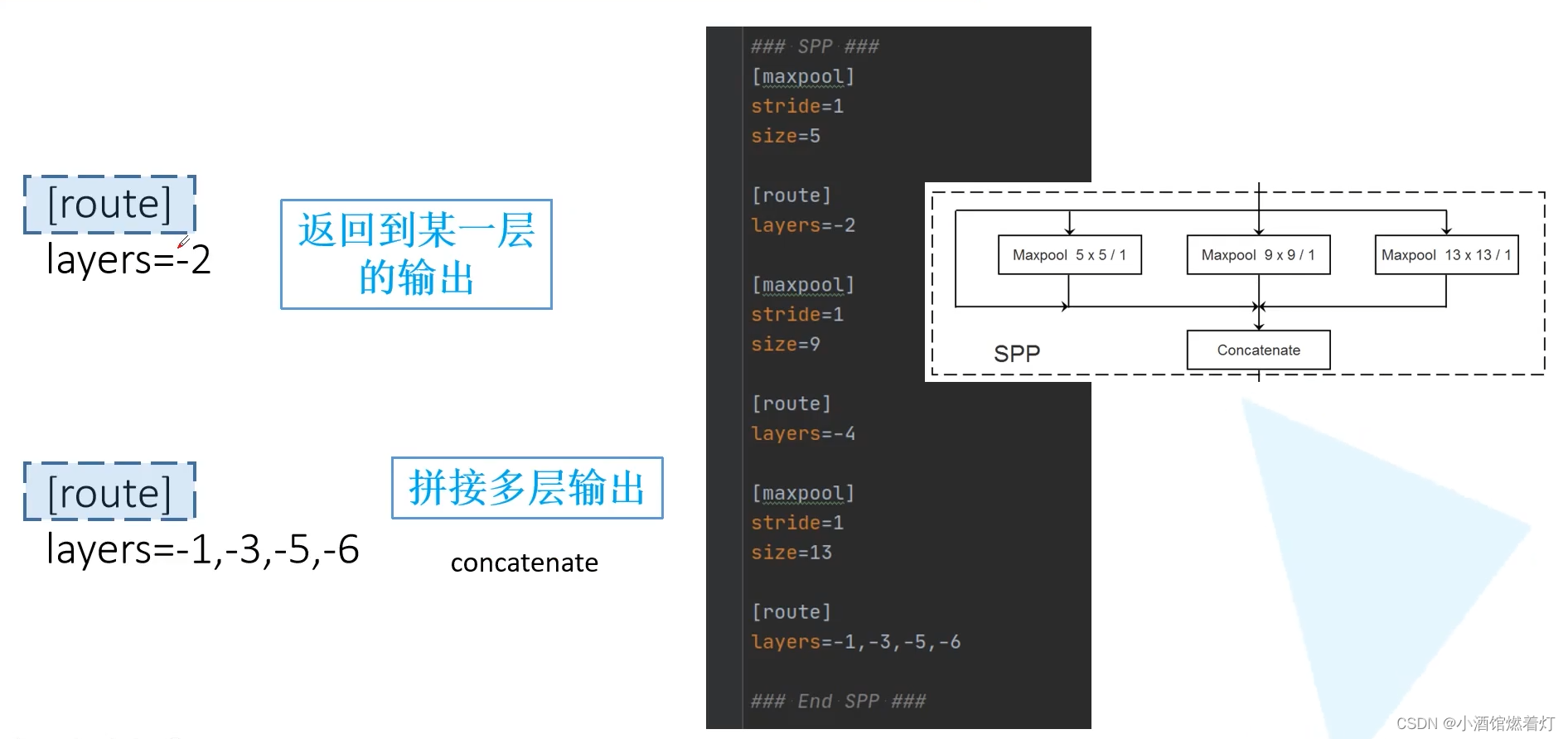
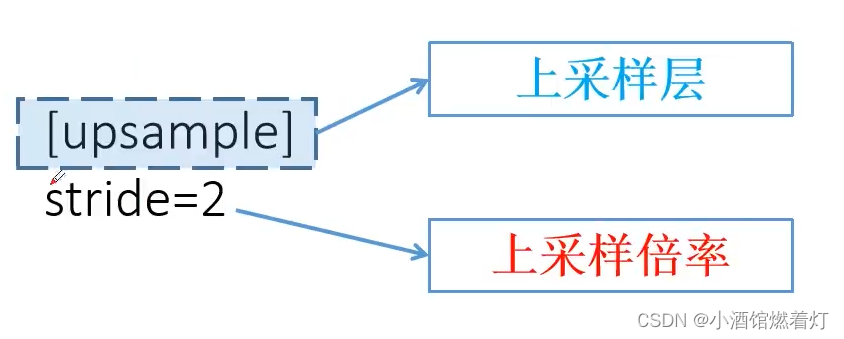
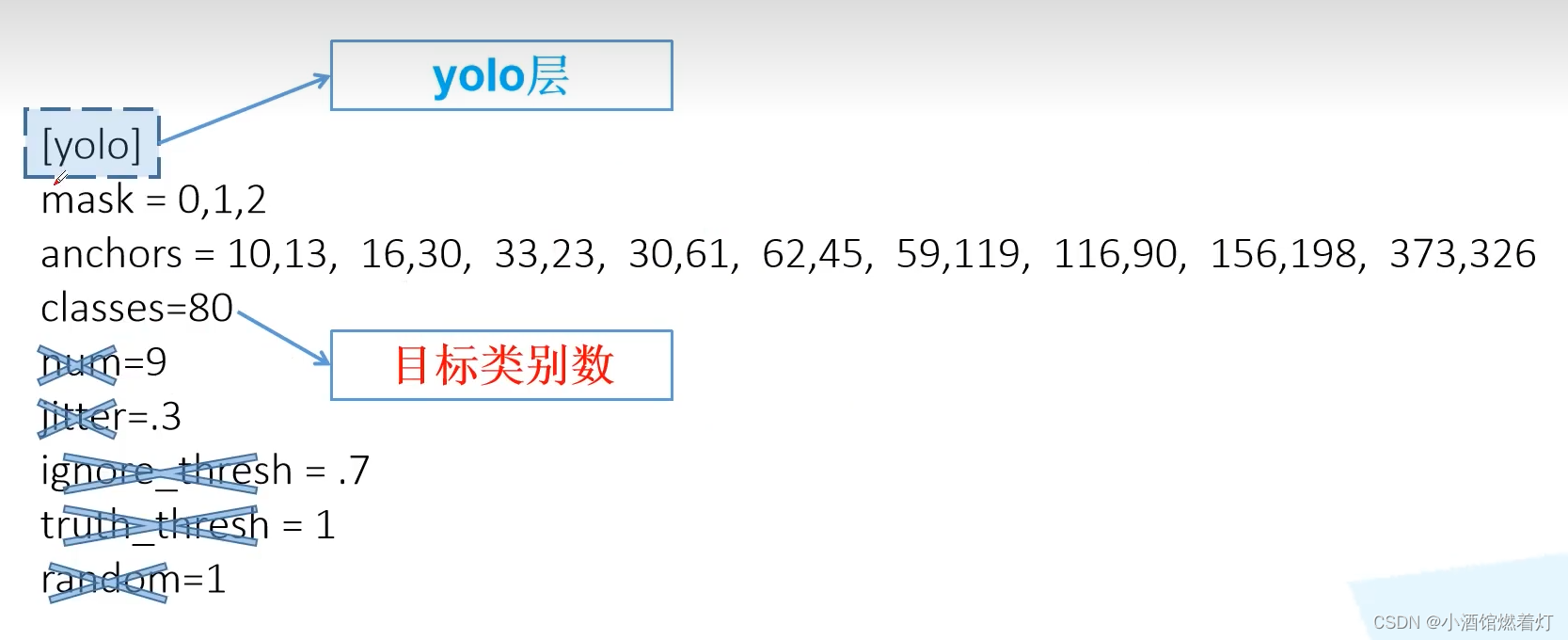
更加详尽的分析
1. Net层
[net]
#Testing
#batch=1
#subdivisions=1
#在测试的时候,设置batch=1,subdivisions=1
#Training
batch=16
subdivisions=4
#这里的batch与普遍意义上的batch不是一致的。
#训练的过程中将一次性加载16张图片进内存,然后分4次完成前向传播,每次4张。
#经过16张图片的前向传播以后,进行一次反向传播。
width=416
height=416
channels=3
#设置图片进入网络的宽、高和通道个数。
#由于YOLOv3的下采样一般是32倍,所以宽高必须能被32整除。
#多尺度训练选择为32的倍数最小320*320,最大608*608。
#长和宽越大,对小目标越好,但是占用显存也会高,需要权衡。
momentum=0.9
#动量参数影响着梯度下降到最优值得速度。
decay=0.0005
#权重衰减正则项,防止过拟合。
angle=0
#数据增强,设置旋转角度。
saturation = 1.5
#饱和度
exposure = 1.5
#曝光量
hue=.1
#色调
learning_rate=0.001
#学习率:刚开始训练时可以将学习率设置的高一点,而一定轮数之后,将其减小。
#在训练过程中,一般根据训练轮数设置动态变化的学习率。
burn_in=1000
max_batches = 500200
#最大batch
policy=steps
#学习率调整的策略,有以下policy:
#constant, steps, exp, poly, step, sig, RANDOM,constant等方式
#调整学习率的policy,
#有如下policy:constant, steps, exp, poly, step, sig, RANDOM。
#steps#比较好理解,按照steps来改变学习率。
steps=400000,450000
scales=.1,.1
#在达到40000、45000的时候将学习率乘以对应的scale
2. 卷积层
[convolutional]
batch_normalize=1
#是否做BN操作
filters=32
#输出特征图的数量
size=3
#卷积核的尺寸
stride=1
#做卷积运算的步长
pad=1
#如果pad为0,padding由padding参数指定。
#如果pad为1,padding大小为size/2,padding应该是对输入图像左边缘拓展的像素数量
activation=leaky
#激活函数的类型:logistic,loggy,relu,
#elu,relie,plse,hardtan,lhtan,
#linear,ramp,leaky,tanh,stair
# alexeyAB版添加了mish, swish, nrom_chan等新的激活函数
feature map计算公式:
OutFeature=\frac{InFeature+2\times padding-size}{stride}+1 \
3. 下采样
可以通过调整卷积层参数进行下采样:
[convolutional]
batch_normalize=1
filters=128
size=3
stride=2
pad=1
activation=leaky
可以通过带入以上公式,可以得到OutFeature是InFeature的一半。
也可以使用maxpooling进行下采样:
[maxpool]
size=2
stride=2
4. 上采样
[upsample]
stride=2
上采样是通过线性插值实现的。
5. Shortcut和Route层
[shortcut]
from=-3
activation=linear
#shortcut操作是类似ResNet的跨层连接,参数from是−3,
#意思是shortcut的输出是当前层与先前的倒数第三层相加而得到。
# 通俗来讲就是add操作
[route]
layers = -1, 36
# 当属性有两个值,就是将上一层和第36层进行concate
#即沿深度的维度连接,这也要求feature map大小是一致的。
[route]
layers = -4
#当属性只有一个值时,它会输出由该值索引的网络层的特征图。
#本例子中就是提取从当前倒数第四个层输出
6. YOLO层
[convolutional]
size=1
stride=1
pad=1
filters=18
#每一个[region/yolo]层前的最后一个卷积层中的
#filters=num(yolo层个数)*(classes+5) ,5的意义是5个坐标,
#代表论文中的tx,ty,tw,th,po
#这里类别个数为1,(1+5)*3=18
activation=linear
[yolo]
mask = 6,7,8
#训练框mask的值是0,1,2,
#这意味着使用第一,第二和第三个anchor
anchors = 10,13, 16,30, 33,23, 30,61, 62,45,\
59,119, 116,90, 156,198, 373,326
# 总共有三个检测层,共计9个anchor
# 这里的anchor是由kmeans聚类算法得到的。
classes=1
#类别个数
num=9
#每个grid预测的BoundingBox num/yolo层个数
jitter=.3
#利用数据抖动产生更多数据,
#属于TTA(Test Time Augmentation)
ignore_thresh = .5
# ignore_thresh 指得是参与计算的IOU阈值大小。
#当预测的检测框与ground true的IOU大于ignore_thresh的时候,
#不会参与loss的计算,否则,检测框将会参与损失计算。
#目的是控制参与loss计算的检测框的规模,当ignore_thresh过于大,
#接近于1的时候,那么参与检测框回归loss的个数就会比较少,同时也容易造成过拟合;
#而如果ignore_thresh设置的过于小,那么参与计算的会数量规模就会很大。
#同时也容易在进行检测框回归的时候造成欠拟合。
#ignore_thresh 一般选取0.5-0.7之间的一个值
# 小尺度(13*13)用的是0.7,
# 大尺度(26*26)用的是0.5。
读取代码的实现
有详细注释
from build_utils.layers import *
from build_utils.parse_config import *
ONNX_EXPORT = False
def create_modules(modules_defs: list, img_size):
"""
Constructs module list of layer blocks from module configuration in module_defs
:param modules_defs: 通过.cfg文件解析得到的每个层结构的列表
:param img_size: 输入图像的大小
:return: 构建的模块列表
"""
img_size = [img_size] * 2 if isinstance(img_size, int) else img_size
# 如果img_size是整数类型,将其转化为长度为2的列表,否则保持原样
modules_defs.pop(0) # cfg training hyperparams (unused)
# 删除模块定义列表的第一个元素,这个元素对应于"[net]"的配置,我们不需要它
output_filters = [3] # input channels
# 初始化输出滤波器列表,值为3,对应输入通道数
module_list = nn.ModuleList()
# 初始化一个nn.ModuleList对象,用于保存构建的模块列表
routs = [] # list of layers which rout to deeper layers
# 初始化一个列表,用于保存那些输出会流向更深层的层的索引
yolo_index = -1
# 初始化yolo层的索引为-1,表示还没有找到yolo层
# 遍历模块定义列表中的每个元素
for i, mdef in enumerate(modules_defs):
modules = nn.Sequential()
# 创建一个nn.Sequential对象,用于保存一个层中的多个模块
if mdef["type"] == "convolutional":
bn = mdef["batch_normalize"] # 1 or 0 / use or not
filters = mdef["filters"]
k = mdef["size"] # kernel size
stride = mdef["stride"] if "stride" in mdef else (mdef['stride_y'], mdef["stride_x"])
# 如果层的类型是"convolutional":
if isinstance(k, int):
modules.add_module("Conv2d", nn.Conv2d(in_channels=output_filters[-1],
out_channels=filters,
kernel_size=k,
stride=stride,
padding=k // 2 if mdef["pad"] else 0,
bias=not bn))
else:
raise TypeError("conv2d filter size must be int type.")
# 添加一个nn.Conv2d层,参数包括输入通道数、输出通道数、卷积核大小、步长、填充等
# 如果卷积核大小不是整数类型,会抛出TypeError异常
if bn:
modules.add_module("BatchNorm2d", nn.BatchNorm2d(filters))
else:
# 如果该卷积操作没有bn层,意味着该层为yolo的predictor
routs.append(i) # detection output (goes into yolo layer)
# 如果存在bn层,添加一个nn.BatchNorm2d层;否则将该层的索引添加到routs列表中,该层为yolo层的predictor层
if mdef["activation"] == "leaky":
modules.add_module("activation", nn.LeakyReLU(0.1, inplace=True))
else:
pass # 如果存在激活函数为"leaky",添加一个nn.LeakyReLU层;否则不添加任何东西
if mdef["type"] == "BatchNorm2d":
# BatchNorm2d层的创建方法,代码中未给出具体实现,这里用pass表示
pass
# 如果"type"是"maxpool",表示这是一个最大池化层
elif mdef["type"] == "maxpool":
# 获取最大池化层的核大小(k)和步长(stride)
k = mdef["size"] # kernel size
stride = mdef["stride"]
# 根据核大小和步长创建最大池化层
modules = nn.MaxPool2d(kernel_size=k, stride=stride, padding=(k - 1) // 2)
# 如果"type"是"upsample",表示这是一个上采样层
elif mdef["type"] == "upsample":
# 如果在ONNX导出模式下,明确地设置上采样层的大小,避免使用scale_factor
if ONNX_EXPORT: # 如果在ONNX导出模式下,判断是否需要明确设置上采样层的大小
# 计算增益(gain)g,通过yolo_index和img_size计算
g = (yolo_index + 1) * 2 / 32 # gain
# 根据增益g设置上采样层的大小
modules = nn.Upsample(size=tuple(int(x * g) for x in img_size))
else:
# 在非ONNX导出模式下,使用scale_factor设置上采样层的大小
modules = nn.Upsample(scale_factor=mdef["stride"])
# 如果"type"是"route",表示这是一个路由层(用于网络中的特征融合)
elif mdef["type"] == "route": # [-2], [-1,-3,-5,-6], [-1, 61]
# 获取路由层的层次信息(layers)
layers = mdef["layers"]
# 计算路由层的特征图总输出通道数(filters)
filters = sum([output_filters[l + 1 if l > 0 else l] for l in layers])
# 将路由层的层次信息添加到routs列表中
routs.extend([i + l if l < 0 else l for l in layers])
# 根据路由层的层次信息创建特征融合层(FeatureConcat)
modules = FeatureConcat(layers=layers)
# 如果"type"是"shortcut",表示这是一个快捷连接层(用于网络中的残差连接)
elif mdef["type"] == "shortcut":
# 获取快捷连接层的输入层次信息(layers)和输出通道数(filters)
layers = mdef["from"]
filters = output_filters[-1]
# 将快捷连接层的输入层次信息添加到routs列表中
# routs.extend([i + l if l < 0 else l for l in layers]) 这一行代码在原代码中被注释掉,可能是误操作,这里将其取消注释
routs.append(i + layers[0]) # 这里假设输入的快捷连接层只有一个输入层次,所以直接用i + layers[0]表示其位置关系
# 根据快捷连接层的输入层次信息创建加权特征融合层(WeightedFeatureFusion)
modules = WeightedFeatureFusion(layers=layers, weight="weights_type" in mdef) # 这里假设weight的判断条件是固定的,如果需要根据不同情况设置不同的weight,需要修改此处代码。
elif mdef["type"] == "yolo": # 如果模块类型是"yolo",执行以下代码
yolo_index += 1 # 记录这是第几个yolo层,从0开始计数 [0, 1, 2]
stride = [32, 16, 8] # 预测特征层对应原图的缩放比例
# 根据mdef中的信息创建一个YOLOLayer对象
modules = YOLOLayer(anchors=mdef["anchors"][mdef["mask"]], # anchor list
nc=mdef["classes"], # number of classes
img_size=img_size,
stride=stride[yolo_index])
# 对于初始化前的Conv2d()偏置进行初始化 (https://arxiv.org/pdf/1708.02002.pdf section 3.3)
try:
j = -1 # j初始化为-1,代表使用最后一个模块进行初始化
# bias: shape(255,) 索引0对应Sequential中的Conv2d
# view: shape(3, 85)
b = module_list[j][0].bias.view(modules.na, -1) # 获取最后一个模块的偏置,并重新塑造为(modules.na, -1)的形状
b.data[:, 4] += -4.5 # obj 调整第4列的偏置值,可能是对某些特定对象检测的偏置进行调整
b.data[:, 5:] += math.log(0.6 / (modules.nc - 0.99)) # cls (sigmoid(p) = 1/nc) 对第5列及之后的列进行偏置调整,可能是对类别检测的偏置进行调整
module_list[j][0].bias = torch.nn.Parameter(b.view(-1), requires_grad=True) # 将调整后的偏置作为参数返回,并设置为需要梯度更新
except Exception as e: # 如果出现异常
print('WARNING: smart bias initialization failure.', e) # 打印警告信息,说明智能偏置初始化失败,并打印异常信息
else: # 如果模块类型不是"yolo"
print("Warning: Unrecognized Layer Type: " + mdef["type"]) # 打印警告信息,说明模块类型未被识别或不支持
# 将创建的模块列表和输出过滤器列表添加到总的列表中
module_list.append(modules)
output_filters.append(filters)
# 为每个模块定义创建一个二进制路由标记,初始值都为False
routs_binary = [False] * len(modules_defs)
for i in routs: # 对每个路由进行遍历
routs_binary[i] = True # 将对应的路由标记设置为True,表示存在该路由
return module_list, routs_binary # 返回模块列表和路由标记列表
# 定义一个YOLOLayer类,继承自torch.nn.Module
class YOLOLayer(nn.Module):
"""
对YOLO的输出进行处理
"""
# 初始化函数
def __init__(self, anchors, nc, img_size, stride):
# 调用父类的初始化函数
super(YOLOLayer, self).__init__()
# 定义anchors张量,这是先验框的尺寸
self.anchors = torch.Tensor(anchors)
# 定义特征图上一步对应原图上的步距
self.stride = stride # layer stride 特征图上一步对应原图上的步距 [32, 16, 8]
# 定义先验框的数量
self.na = len(anchors) # number of anchors (3)
# 定义类别数量
self.nc = nc # number of classes (80)
# 定义输出的数量(包括obj,cls1等)
self.no = nc + 5 # number of outputs (85: x, y, w, h, obj, cls1, ...)
# 初始化网格数量为0
self.nx, self.ny, self.ng = 0, 0, (0, 0) # initialize number of x, y gridpoints
# 将anchors大小缩放到grid尺度
self.anchor_vec = self.anchors / self.stride # batch_size, na, grid_h, grid_w, wh, 值为1的维度对应的值不是固定值,后续操作可根据broadcast广播机制自动扩充
self.anchor_wh = self.anchor_vec.view(1, self.na, 1, 1, 2) # batch_size, na, grid_h, grid_w, wh
self.grid = None # grid变量初始化为None
# 如果是在导出ONNX模型,设置训练状态为False,同时根据给定的img_size创建grid变量
if ONNX_EXPORT: # 如果ONNX_EXPORT为True,进入该条件块
self.training = False # 设置训练状态为False
self.create_grids((img_size[1] // stride, img_size[0] // stride)) # number x, y grid points 根据给定的img_size和stride来创建grid变量
# 定义一个名为create_grids的方法,该方法属于某个类,该类具有self(即实例本身)作为第一个参数
def create_grids(self, ng=(13, 13), device="cpu"):
"""
更新grids信息并生成新的grids参数
:param ng: 特征图大小,默认为(13, 13)
:param device: 设备类型,默认为"cpu"
:return: 无返回值,但会更新类实例的属性值
"""
# 将传入的ng参数赋值给self.nx和self.ny,表示特征图的横纵尺寸
self.nx, self.ny = ng
# 将ng参数转换为torch.tensor类型,并赋值给self.ng,用于记录特征图的尺寸
self.ng = torch.tensor(ng, dtype=torch.float)
# 构建xy offsets,即每个网格单元处的anchor的xy偏移量(相对于特征图原点)
# build xy offsets 构建每个cell处的anchor的xy偏移量(在feature map上的)
if not self.training: # 如果当前不是训练模式...
# 使用torch.meshgrid函数生成网格坐标,yv为纵坐标,xv为横坐标
yv, xv = torch.meshgrid([torch.arange(self.ny, device=device),
torch.arange(self.nx, device=device)])
# 将生成的横纵坐标进行堆叠,并通过view方法变换形状,成为(1, 1, self.ny, self.nx, 2)的张量
# batch_size, na, grid_h, grid_w, wh
self.grid = torch.stack((xv, yv), 2).view((1, 1, self.ny, self.nx, 2)).float()
# 如果anchor_vec的设备类型和当前的device不一致,就将anchor_vec和anchor_wh移动到当前的device上
if self.anchor_vec.device != device:
self.anchor_vec = self.anchor_vec.to(device)
self.anchor_wh = self.anchor_wh.to(device)
# 定义一个名为forward的函数,它是模型的前向传播过程
def forward(self, p):
# 判断是否是在导出ONNX模型,如果是则设置batch size为1,否则从输入参数中获取batch size
if ONNX_EXPORT:
bs = 1 # batch size
else:
# 获取输入参数p的形状,并将三个维度分别赋值给bs(batch size)、ny(网络高度)、nx(网络宽度)
bs, _, ny, nx = p.shape # batch_size, predict_param(255), grid(13), grid(13)
# 检查网络尺寸是否与之前保存的尺寸相同,如果不同则重新创建网格,并赋值给self.grid
if (self.nx, self.ny) != (nx, ny) or self.grid is None: # fix no grid bug
self.create_grids((nx, ny), p.device)
# 将输入参数的形状从(batch_size, 255, 13, 13)变换为(batch_size, 3, 85, 13, 13),85是由255*3得到的
# permute操作将维度顺序变换,具体为:先保证第一维度不动,然后依次将后面的维度进行置换
# 这里的意思是将(batch_size, 255, 13, 13)变换为(batch_size, 3, 85, 13, 13),然后再将其变换为(batch_size, 3, 13, 13, 85)
# [bs, anchor, grid, grid, xywh + obj + classes]
p = p.view(bs, self.na, self.no, self.ny, self.nx).permute(0, 1, 3, 4, 2).contiguous() # prediction
# 如果模型处于训练状态,则直接返回预测结果p
if self.training:
return p
# 如果是在导出ONNX模型,进行以下操作
elif ONNX_EXPORT:
# 为了避免ANN操作中的广播机制,计算锚点数量m,它是self.na、self.nx、self.ny三个值的乘积
# 将self.ng的值重复m次,得到新的ng,然后计算其倒数ng
m = self.na * self.nx * self.ny # 3*
ng = 1. / self.ng.repeat(m, 1)
# 将self.grid的值重复(1, self.na, 1, 1, 1)次,得到新的grid,然后将其形状变换为(m, 2)
grid = self.grid.repeat(1, self.na, 1, 1, 1).view(m, 2)
# 将self.anchor_wh的值重复(1, 1, self.nx, self.ny, 1)次,得到新的anchor_wh,然后将其形状变换为(m, 2),并乘以ng
anchor_wh = self.anchor_wh.repeat(1, 1, self.nx, self.ny, 1).view(m, 2) * ng
# p = p.view(m, self.no) # 调整张量的形状,以适应后续操作。m可能是一个预设的形状或者是某个特定形状的函数。self.no表示类别数量。
p = p.view(m, self.no)
# xy = torch.sigmoid(p[:, 0:2]) + grid # x, y 通过sigmoid函数处理p的前两列并加上grid,grid可能表示网格坐标
# wh = torch.exp(p[:, 2:4]) * anchor_wh # width, height 对p的第3列到第5列应用指数函数处理并乘以anchor_wh(锚框的宽高)
# p_cls = torch.sigmoid(p[:, 4:5]) if self.nc == 1 else \ # conf 使用sigmoid函数处理p的第5列,如果类别数量为1,否则处理前两个类别并乘以p的第5列
p[:, :2] = (torch.sigmoid(p[:, 0:2]) + grid) * ng # x, y 对p的前两列应用sigmoid函数并加上grid,然后乘以ng(某种缩放系数)
p[:, 2:4] = torch.exp(p[:, 2:4]) * anchor_wh # width, height 对p的第3列到第5列应用指数函数处理并乘以anchor_wh(锚框的宽高)
p[:, 4:] = torch.sigmoid(p[:, 4:]) # 对p的第5列后的所有列应用sigmoid函数
p[:, 5:] = p[:, 5:self.no] * p[:, 4:5] # 对p的第5列后的所有列与第4列后的某一列相乘
return p # 返回处理后的p
else: # 判断是否处于推理模式
# 推理模式下的操作
# [bs, anchor, grid, grid, xywh + obj + classes]克隆p,创建一个新的张量io,其中包含和p相同的数据,但某些元素可能被修改
io = p.clone() # inference output
io[..., :2] = torch.sigmoid(io[..., :2]) + self.grid # xy 计算在feature map上的xy坐标 通过sigmoid函数处理io的前两列并加上self.grid(可能表示在feature map上的网格坐标)
io[..., 2:4] = torch.exp(io[..., 2:4]) * self.anchor_wh # wh yolo method 计算在feature map上的wh 对io的第3列到第5列应用指数函数处理并乘以self.anchor_wh(锚框的宽高)
io[..., :4] *= self.stride # 换算映射回原图尺度 io的前四列元素乘以self.stride(某种缩放系数)
torch.sigmoid_(io[..., 4:]) # 对io的第5列后的所有列应用sigmoid函数
return io.view(bs, -1, self.no), p # view [1, 3, 13, 13, 85] as [1, 507, 85] 最后返回一个形如[bs, -1, self.no]的张量和一个原始的p张量
class Darknet(nn.Module):
"""
YOLOv3 spp object detection model
"""
def __init__(self, cfg, img_size=(416, 416), verbose=False):
super(Darknet, self).__init__()
# 这里传入的img_size只在导出ONNX模型时起作用
self.input_size = [img_size] * 2 if isinstance(img_size, int) else img_size
# 解析网络对应的.cfg文件
self.module_defs = parse_model_cfg(cfg)
# 根据解析的网络结构一层一层去搭建
self.module_list, self.routs = create_modules(self.module_defs, img_size)
# 获取所有YOLOLayer层的索引
self.yolo_layers = get_yolo_layers(self)
# 打印下模型的信息,如果verbose为True则打印详细信息
self.info(verbose) if not ONNX_EXPORT else None # print model description
def forward(self, x, verbose=False):
return self.forward_once(x, verbose=verbose)
def forward_once(self, x, verbose=False):
# yolo_out收集每个yolo_layer层的输出
# out收集每个模块的输出
yolo_out, out = [], [] # 初始化两个空列表,用于存储YOLO层的输出和所有模块的输出
if verbose:
print('0', x.shape) # 如果verbose为True,打印输入x的形状
str = "" # 初始化一个空字符串str,用于后续打印信息
for i, module in enumerate(self.module_list): # 遍历module_list中的每个模块,并用enumerate函数获取模块的索引i
name = module.__class__.__name__ # 获取当前模块的类名
if name in ["WeightedFeatureFusion", "FeatureConcat"]: # 如果类名为"WeightedFeatureFusion"或"FeatureConcat"
if verbose:
l = [i - 1] + module.layers # 获取模块的层次列表,列表首项为当前模块索引,后面为上层模块索引
sh = [list(x.shape)] + [list(out[i].shape) for i in module.layers] # 获取输入x的形状和上层模块输出的形状列表
str = ' >> ' + ' + '.join(['layer %g %s' % x for x in zip(l, sh)]) # 拼接字符串,用于打印信息
x = module(x, out) # 调用WeightedFeatureFusion或FeatureConcat方法,输入为x和上层模块的输出
elif name == "YOLOLayer": # 如果类名为"YOLOLayer"
yolo_out.append(module(x)) # 将YOLO层的输出添加到yolo_out列表中
else: # 如果类名不属于["WeightedFeatureFusion", "FeatureConcat", "YOLOLayer"]中的任何一个
x = module(x) # 直接运行该模块,例如卷积、上采样、最大池化、批量归一化等操作
out.append(x if self.routs[i] else []) # 如果self.routs[i]为True,将当前模块的输出添加到out列表中,否则添加空列表
if verbose:
print('%g/%g %s -' % (i, len(self.module_list), name), list(x.shape), str) # 打印模块索引、类名、输入形状和之前拼接的字符串str
str = '' # 重置字符串str为空,用于下一次拼接
if self.training: # train
return yolo_out
elif ONNX_EXPORT: # export
# x = [torch.cat(x, 0) for x in zip(*yolo_out)]
# return x[0], torch.cat(x[1:3], 1) # scores, boxes: 3780x80, 3780x4
p = torch.cat(yolo_out, dim=0)
# # 根据objectness虑除低概率目标
# mask = torch.nonzero(torch.gt(p[:, 4], 0.1), as_tuple=False).squeeze(1)
# # onnx不支持超过一维的索引(pytorch太灵活了)
# # p = p[mask]
# p = torch.index_select(p, dim=0, index=mask)
#
# # 虑除小面积目标,w > 2 and h > 2 pixel
# # ONNX暂不支持bitwise_and和all操作
# mask_s = torch.gt(p[:, 2], 2./self.input_size[0]) & torch.gt(p[:, 3], 2./self.input_size[1])
# mask_s = torch.nonzero(mask_s, as_tuple=False).squeeze(1)
# p = torch.index_select(p, dim=0, index=mask_s) # width-height 虑除小目标
#
# if mask_s.numel() == 0:
# return torch.empty([0, 85])
return p
else: # inference or test
x, p = zip(*yolo_out) # inference output, training output
x = torch.cat(x, 1) # cat yolo outputs
return x, p
def info(self, verbose=False):
"""
打印模型的信息
:param verbose:
:return:
"""
torch_utils.model_info(self, verbose)
def get_yolo_layers(self):
"""
获取网络中三个"YOLOLayer"模块对应的索引
:param self:
:return:
"""
return [i for i, m in enumerate(self.module_list) if m.__class__.__name__ == 'YOLOLayer'] # [89, 101, 113]
import os
import numpy as np
def parse_model_cfg(path: str):
# 检查文件是否存在
if not path.endswith(".cfg") or not os.path.exists(path):
raise FileNotFoundError("the cfg file not exist...")
# 读取文件信息
with open(path, "r") as f:
lines = f.read().split("\n")
# 去除空行和注释行
lines = [x for x in lines if x and not x.startswith("#")]
# 去除每行开头和结尾的空格符
lines = [x.strip() for x in lines]
mdefs = [] # module definitions
for line in lines:
if line.startswith("["): # this marks the start of a new block
mdefs.append({})
mdefs[-1]["type"] = line[1:-1].strip() # 记录module类型
# 如果是卷积模块,设置默认不使用BN(普通卷积层后面会重写成1,最后的预测层conv保持为0)
if mdefs[-1]["type"] == "convolutional":
mdefs[-1]["batch_normalize"] = 0
else:
key, val = line.split("=")
key = key.strip()
val = val.strip()
if key == "anchors":
# anchors = 10,13, 16,30, 33,23, 30,61, 62,45, 59,119, 116,90, 156,198, 373,326
val = val.replace(" ", "") # 将空格去除
mdefs[-1][key] = np.array([float(x) for x in val.split(",")]).reshape((-1, 2)) # np anchors
elif (key in ["from", "layers", "mask"]) or (key == "size" and "," in val):
mdefs[-1][key] = [int(x) for x in val.split(",")]
else:
# TODO: .isnumeric() actually fails to get the float case
if val.isnumeric(): # return int or float 如果是数值的情况
mdefs[-1][key] = int(val) if (int(val) - float(val)) == 0 else float(val)
else:
mdefs[-1][key] = val # return string 是字符的情况
# check all fields are supported
supported = ['type', 'batch_normalize', 'filters', 'size', 'stride', 'pad', 'activation', 'layers', 'groups',
'from', 'mask', 'anchors', 'classes', 'num', 'jitter', 'ignore_thresh', 'truth_thresh', 'random',
'stride_x', 'stride_y', 'weights_type', 'weights_normalization', 'scale_x_y', 'beta_nms', 'nms_kind',
'iou_loss', 'iou_normalizer', 'cls_normalizer', 'iou_thresh', 'probability']
# 遍历检查每个模型的配置
for x in mdefs[1:]: # 0对应net配置
# 遍历每个配置字典中的key值
for k in x:
if k not in supported:
raise ValueError("Unsupported fields:{} in cfg".format(k))
return mdefs
import torch.nn.functional as F
from .utils import *
# 定义一个名为FeatureConcat的类,继承自nn.Module类,nn.Module是所有神经网络模块的基类
class FeatureConcat(nn.Module):
"""
# 类的文档字符串,用于解释类的功能
将多个特征矩阵在channel维度进行concatenate拼接
"""
# 初始化函数,在创建类的实例时被调用
def __init__(self, layers):
# 调用父类的初始化函数,这是Python的继承机制的一部分
super(FeatureConcat, self).__init__()
# 将传入的参数layers赋值给self.layers,layer indices表示层的索引
self.layers = layers # layer indices
# 判断是否有多层,如果layers的长度大于1则说明有多个层,将结果赋值给self.multiple
self.multiple = len(layers) > 1 # multiple layers flag
# 前向传播函数,在计算输出时被调用
def forward(self, x, outputs):
# 如果有多层(即self.multiple为True),则使用torch.cat函数将outputs中对应self.layers的元素在channel维度拼接起来并返回,否则直接返回outputs中对应self.layers的元素
return torch.cat([outputs[i] for i in self.layers], 1) if self.multiple else outputs[self.layers[0]]
# 定义一个名为WeightedFeatureFusion的类,继承自nn.Module,用于实现特征矩阵的加权融合
class WeightedFeatureFusion(nn.Module): # weighted sum of 2 or more layers https://arxiv.org/abs/1911.09070
"""
将多个特征矩阵的值进行融合(add操作)
"""
def __init__(self, layers, weight=False):
# 调用父类的构造函数,进行初始化操作
super(WeightedFeatureFusion, self).__init__()
# 定义成员变量layers,存储要进行融合的特征矩阵的索引
self.layers = layers # layer indices
# 定义成员变量weight,表示是否应用权重,默认不应用权重
self.weight = weight # apply weights boolean
# 定义成员变量n,表示融合的特征矩阵个数加1
self.n = len(layers) + 1 # number of layers 融合的特征矩阵个数
# 如果应用权重,则定义成员变量w为nn.Parameter类型,初始值为torch.zeros(self.n),要求计算梯度
if weight:
self.w = nn.Parameter(torch.zeros(self.n), requires_grad=True) # layer weights
def forward(self, x, outputs):
# 前向传播函数,输入x为输入特征矩阵,outputs为所有层的输出特征矩阵
# Weights
if self.weight:
# 如果应用权重,则对权重进行sigmoid激活函数处理,使得权重在0-1之间
w = torch.sigmoid(self.w) * (2 / self.n) # sigmoid weights (0-1)
# 对输入特征矩阵x乘以权重w的第一个元素
x = x * w[0]
# Fusion
nx = x.shape[1] # 输入特征矩阵x的通道数
for i in range(self.n - 1):
a = outputs[self.layers[i]] * w[i + 1] if self.weight else outputs[self.layers[i]] # feature to add
na = a.shape[1] # 特征矩阵a的通道数
# Adjust channels
# 根据相加的两个特征矩阵的channel选择相加方式
if nx == na: # same shape 如果channel相同,直接相加
x = x + a
elif nx > na: # slice input 如果channel不同,将channel多的特征矩阵砍掉部分channel保证相加的channel一致
x[:, :na] = x[:, :na] + a # or a = nn.ZeroPad2d((0, 0, 0, 0, 0, dc))(a); x = x + a
else: # slice feature
x = x + a[:, :nx]
return x # 返回融合后的特征矩阵x
全部cfg
[net]
# Testing
# batch=1
# subdivisions=1
# Training
batch=64
subdivisions=16
width=608
height=608
channels=3
momentum=0.9
decay=0.0005
angle=0
saturation = 1.5
exposure = 1.5
hue=.1
learning_rate=0.001
burn_in=1000
max_batches = 500200
policy=steps
steps=400000,450000
scales=.1,.1
[convolutional]
batch_normalize=1
filters=32
size=3
stride=1
pad=1
activation=leaky
# Downsample
[convolutional]
batch_normalize=1
filters=64
size=3
stride=2
pad=1
activation=leaky
[convolutional]
batch_normalize=1
filters=32
size=1
stride=1
pad=1
activation=leaky
[convolutional]
batch_normalize=1
filters=64
size=3
stride=1
pad=1
activation=leaky
[shortcut]
from=-3
activation=linear
# Downsample
[convolutional]
batch_normalize=1
filters=128
size=3
stride=2
pad=1
activation=leaky
[convolutional]
batch_normalize=1
filters=64
size=1
stride=1
pad=1
activation=leaky
[convolutional]
batch_normalize=1
filters=128
size=3
stride=1
pad=1
activation=leaky
[shortcut]
from=-3
activation=linear
[convolutional]
batch_normalize=1
filters=64
size=1
stride=1
pad=1
activation=leaky
[convolutional]
batch_normalize=1
filters=128
size=3
stride=1
pad=1
activation=leaky
[shortcut]
from=-3
activation=linear
# Downsample
[convolutional]
batch_normalize=1
filters=256
size=3
stride=2
pad=1
activation=leaky
[convolutional]
batch_normalize=1
filters=128
size=1
stride=1
pad=1
activation=leaky
[convolutional]
batch_normalize=1
filters=256
size=3
stride=1
pad=1
activation=leaky
[shortcut]
from=-3
activation=linear
[convolutional]
batch_normalize=1
filters=128
size=1
stride=1
pad=1
activation=leaky
[convolutional]
batch_normalize=1
filters=256
size=3
stride=1
pad=1
activation=leaky
[shortcut]
from=-3
activation=linear
[convolutional]
batch_normalize=1
filters=128
size=1
stride=1
pad=1
activation=leaky
[convolutional]
batch_normalize=1
filters=256
size=3
stride=1
pad=1
activation=leaky
[shortcut]
from=-3
activation=linear
[convolutional]
batch_normalize=1
filters=128
size=1
stride=1
pad=1
activation=leaky
[convolutional]
batch_normalize=1
filters=256
size=3
stride=1
pad=1
activation=leaky
[shortcut]
from=-3
activation=linear
[convolutional]
batch_normalize=1
filters=128
size=1
stride=1
pad=1
activation=leaky
[convolutional]
batch_normalize=1
filters=256
size=3
stride=1
pad=1
activation=leaky
[shortcut]
from=-3
activation=linear
[convolutional]
batch_normalize=1
filters=128
size=1
stride=1
pad=1
activation=leaky
[convolutional]
batch_normalize=1
filters=256
size=3
stride=1
pad=1
activation=leaky
[shortcut]
from=-3
activation=linear
[convolutional]
batch_normalize=1
filters=128
size=1
stride=1
pad=1
activation=leaky
[convolutional]
batch_normalize=1
filters=256
size=3
stride=1
pad=1
activation=leaky
[shortcut]
from=-3
activation=linear
[convolutional]
batch_normalize=1
filters=128
size=1
stride=1
pad=1
activation=leaky
[convolutional]
batch_normalize=1
filters=256
size=3
stride=1
pad=1
activation=leaky
[shortcut]
from=-3
activation=linear
# Downsample
[convolutional]
batch_normalize=1
filters=512
size=3
stride=2
pad=1
activation=leaky
[convolutional]
batch_normalize=1
filters=256
size=1
stride=1
pad=1
activation=leaky
[convolutional]
batch_normalize=1
filters=512
size=3
stride=1
pad=1
activation=leaky
[shortcut]
from=-3
activation=linear
[convolutional]
batch_normalize=1
filters=256
size=1
stride=1
pad=1
activation=leaky
[convolutional]
batch_normalize=1
filters=512
size=3
stride=1
pad=1
activation=leaky
[shortcut]
from=-3
activation=linear
[convolutional]
batch_normalize=1
filters=256
size=1
stride=1
pad=1
activation=leaky
[convolutional]
batch_normalize=1
filters=512
size=3
stride=1
pad=1
activation=leaky
[shortcut]
from=-3
activation=linear
[convolutional]
batch_normalize=1
filters=256
size=1
stride=1
pad=1
activation=leaky
[convolutional]
batch_normalize=1
filters=512
size=3
stride=1
pad=1
activation=leaky
[shortcut]
from=-3
activation=linear
[convolutional]
batch_normalize=1
filters=256
size=1
stride=1
pad=1
activation=leaky
[convolutional]
batch_normalize=1
filters=512
size=3
stride=1
pad=1
activation=leaky
[shortcut]
from=-3
activation=linear
[convolutional]
batch_normalize=1
filters=256
size=1
stride=1
pad=1
activation=leaky
[convolutional]
batch_normalize=1
filters=512
size=3
stride=1
pad=1
activation=leaky
[shortcut]
from=-3
activation=linear
[convolutional]
batch_normalize=1
filters=256
size=1
stride=1
pad=1
activation=leaky
[convolutional]
batch_normalize=1
filters=512
size=3
stride=1
pad=1
activation=leaky
[shortcut]
from=-3
activation=linear
[convolutional]
batch_normalize=1
filters=256
size=1
stride=1
pad=1
activation=leaky
[convolutional]
batch_normalize=1
filters=512
size=3
stride=1
pad=1
activation=leaky
[shortcut]
from=-3
activation=linear
# Downsample
[convolutional]
batch_normalize=1
filters=1024
size=3
stride=2
pad=1
activation=leaky
[convolutional]
batch_normalize=1
filters=512
size=1
stride=1
pad=1
activation=leaky
[convolutional]
batch_normalize=1
filters=1024
size=3
stride=1
pad=1
activation=leaky
[shortcut]
from=-3
activation=linear
[convolutional]
batch_normalize=1
filters=512
size=1
stride=1
pad=1
activation=leaky
[convolutional]
batch_normalize=1
filters=1024
size=3
stride=1
pad=1
activation=leaky
[shortcut]
from=-3
activation=linear
[convolutional]
batch_normalize=1
filters=512
size=1
stride=1
pad=1
activation=leaky
[convolutional]
batch_normalize=1
filters=1024
size=3
stride=1
pad=1
activation=leaky
[shortcut]
from=-3
activation=linear
[convolutional]
batch_normalize=1
filters=512
size=1
stride=1
pad=1
activation=leaky
[convolutional]
batch_normalize=1
filters=1024
size=3
stride=1
pad=1
activation=leaky
[shortcut]
from=-3
activation=linear
######################
[convolutional]
batch_normalize=1
filters=512
size=1
stride=1
pad=1
activation=leaky
[convolutional]
batch_normalize=1
size=3
stride=1
pad=1
filters=1024
activation=leaky
[convolutional]
batch_normalize=1
filters=512
size=1
stride=1
pad=1
activation=leaky
### SPP ###
[maxpool]
stride=1
size=5
[route]
layers=-2
[maxpool]
stride=1
size=9
[route]
layers=-4
[maxpool]
stride=1
size=13
[route]
layers=-1,-3,-5,-6
### End SPP ###
[convolutional]
batch_normalize=1
filters=512
size=1
stride=1
pad=1
activation=leaky
[convolutional]
batch_normalize=1
size=3
stride=1
pad=1
filters=1024
activation=leaky
[convolutional]
batch_normalize=1
filters=512
size=1
stride=1
pad=1
activation=leaky
[convolutional]
batch_normalize=1
size=3
stride=1
pad=1
filters=1024
activation=leaky
[convolutional]
size=1
stride=1
pad=1
filters=75
activation=linear
[yolo]
mask = 6,7,8
anchors = 10,13, 16,30, 33,23, 30,61, 62,45, 59,119, 116,90, 156,198, 373,326
classes=20
num=9
jitter=.3
ignore_thresh = .7
truth_thresh = 1
random=1
[route]
layers = -4
[convolutional]
batch_normalize=1
filters=256
size=1
stride=1
pad=1
activation=leaky
[upsample]
stride=2
[route]
layers = -1, 61
[convolutional]
batch_normalize=1
filters=256
size=1
stride=1
pad=1
activation=leaky
[convolutional]
batch_normalize=1
size=3
stride=1
pad=1
filters=512
activation=leaky
[convolutional]
batch_normalize=1
filters=256
size=1
stride=1
pad=1
activation=leaky
[convolutional]
batch_normalize=1
size=3
stride=1
pad=1
filters=512
activation=leaky
[convolutional]
batch_normalize=1
filters=256
size=1
stride=1
pad=1
activation=leaky
[convolutional]
batch_normalize=1
size=3
stride=1
pad=1
filters=512
activation=leaky
[convolutional]
size=1
stride=1
pad=1
filters=75
activation=linear
[yolo]
mask = 3,4,5
anchors = 10,13, 16,30, 33,23, 30,61, 62,45, 59,119, 116,90, 156,198, 373,326
classes=20
num=9
jitter=.3
ignore_thresh = .7
truth_thresh = 1
random=1
[route]
layers = -4
[convolutional]
batch_normalize=1
filters=128
size=1
stride=1
pad=1
activation=leaky
[upsample]
stride=2
[route]
layers = -1, 36
[convolutional]
batch_normalize=1
filters=128
size=1
stride=1
pad=1
activation=leaky
[convolutional]
batch_normalize=1
size=3
stride=1
pad=1
filters=256
activation=leaky
[convolutional]
batch_normalize=1
filters=128
size=1
stride=1
pad=1
activation=leaky
[convolutional]
batch_normalize=1
size=3
stride=1
pad=1
filters=256
activation=leaky
[convolutional]
batch_normalize=1
filters=128
size=1
stride=1
pad=1
activation=leaky
[convolutional]
batch_normalize=1
size=3
stride=1
pad=1
filters=256
activation=leaky
[convolutional]
size=1
stride=1
pad=1
filters=75
activation=linear
[yolo]
mask = 0,1,2
anchors = 10,13, 16,30, 33,23, 30,61, 62,45, 59,119, 116,90, 156,198, 373,326
classes=20
num=9
jitter=.3
ignore_thresh = .7
truth_thresh = 1
random=1

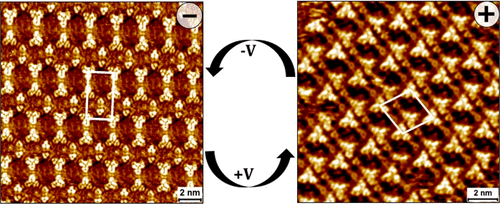


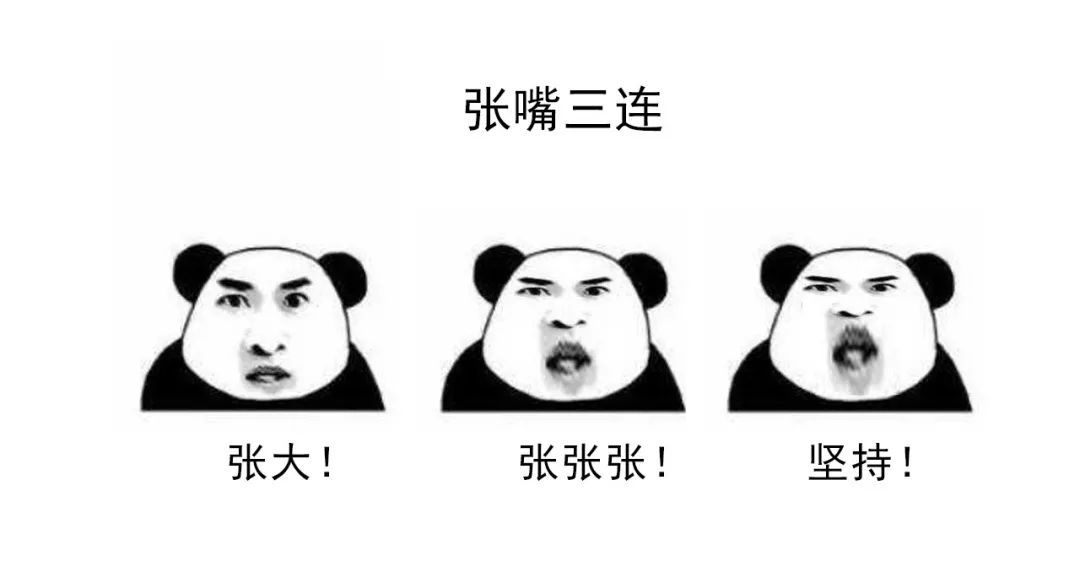

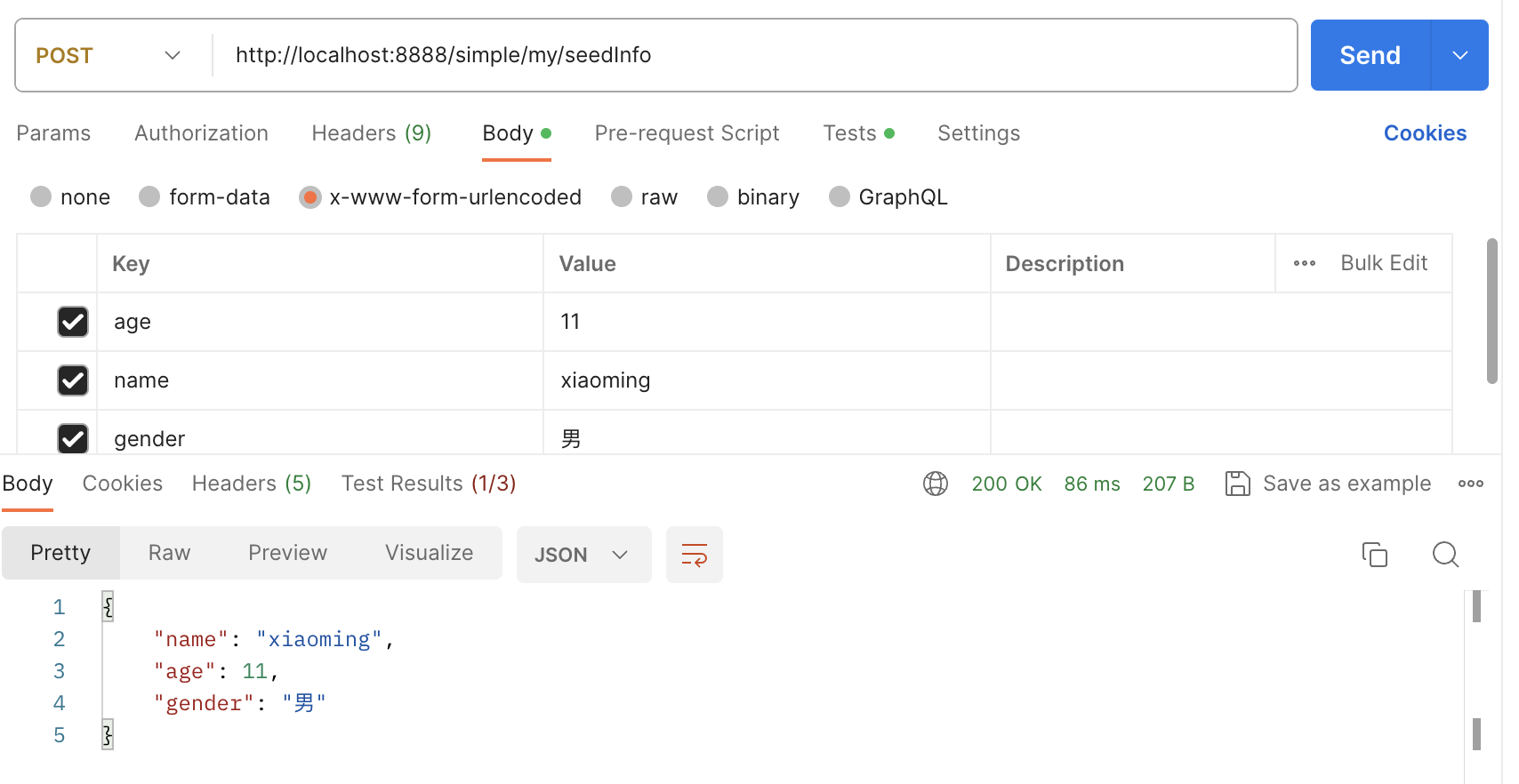

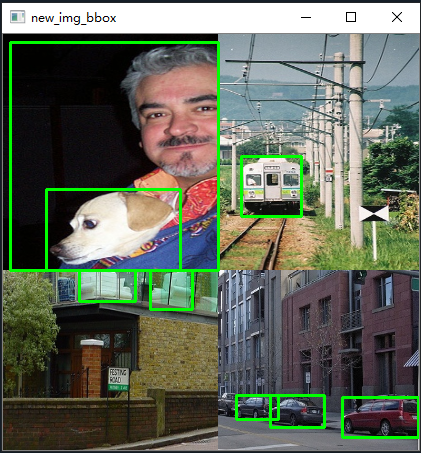
![[ CSS ] 内容超出容器后 以...省略](https://img-blog.csdnimg.cn/img_convert/bc83ef4b5bda4b80c35ef58352dacb6e.jpeg)
